Cement Mortars
As stated on the Introduction page , there are two very different types of mortar used for jointing stone paving: cement-based and resin-based. There are pros and cons to each type, and it is not possible to state that one particular type is always the better option.
Just to really confuse matters, the 'chosen ones' (ie: those that tell the rest of us how to do everything but never actually get their own hands dirty) are now proclaiming that we should refer to "hydraulically bound mortar", a term they feel encompasses all forms of cement (PFA , GBFS , lime, etc) and not just the best known cement, Ordinary Portland (OPC).
Mortar jointing is used only with rigid paving. It is not suitable for flexible construction, as it would simply crack and disappear from the joints in next to no time. A separate page deals with jointing methods suitable for flexible pavements.
Messy or sloppy mortar pointing can completely ruin the finished appearance of a pavement, and a poor tradesman can make expensive stone paving look abso-bloody-lutely awful: compare and contrast the two images below.
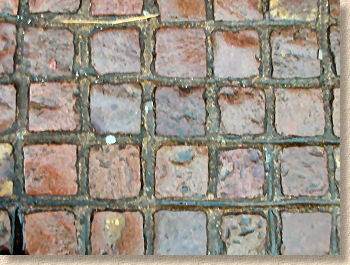
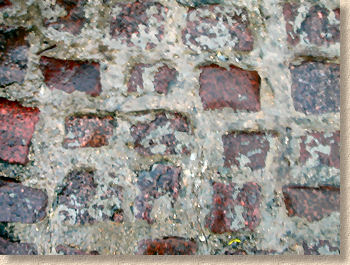
Site-mixed mortars
This term refers to mortars that are batched and mixed on-site from raw materials. Unless there is strict control over the batching, site-mixed mortars have a tendency to vary in cement content, slump, colour and strength, ranging for the genuine 3:1 mix where there is precisely three times as much sand as cement, to the 'twenty-to-plenty' mixes churned out by distracted labourers who are far more interested by a special feature in the Daily Sport than they are in controlling their batch quantities.
Site-mixed mortars should be carefully batched, using consistent 'measures' whether these are weight or volume. It's worth noting that a shovelful of sand is rarely equivalent to a shovelful of cement. Sand tends to be damp and clumps together, resulting in more material per shovelful than is possible with the dry-as-a-bone cement. When mixing by volume, use "bucketfuls" or "Apprentice's lunchbox-fuls", which are more likely to be consistent than the somewhat vague 'shovelful'.
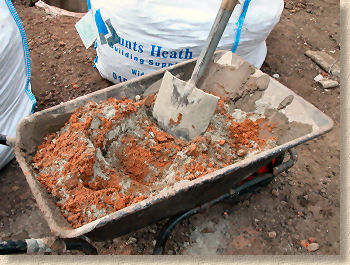
Colour
For most site-mixed mortars, the end colour is determined by the colour of the sand, and there is usually a significant difference between plastic fresh mortar and that which has cured and hardened. The red sands of NW England, lowland Scotland and the West Country create pinky-brown mortars while the orange sands of London and the South-east of England create yellowy-brown mortars, and the neutral silvery-buff sands of Ireland make a neutral, silvery-buff mortar.
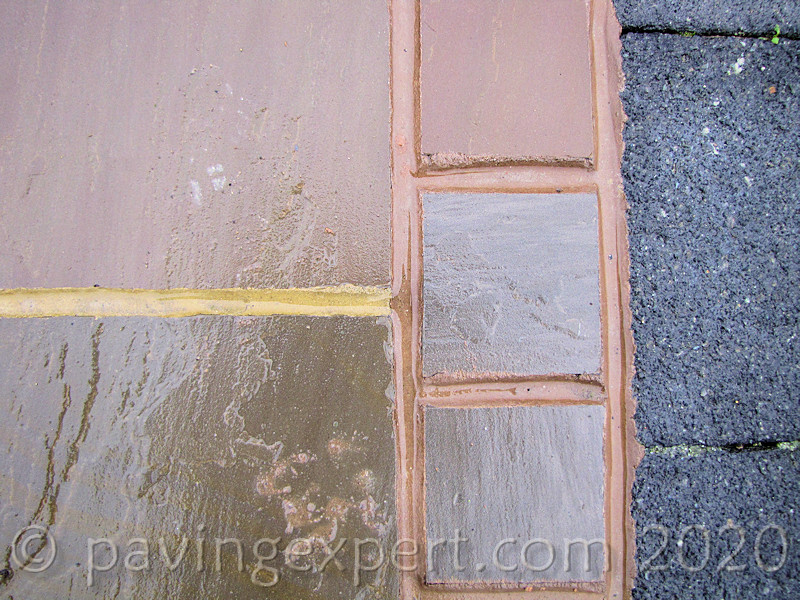
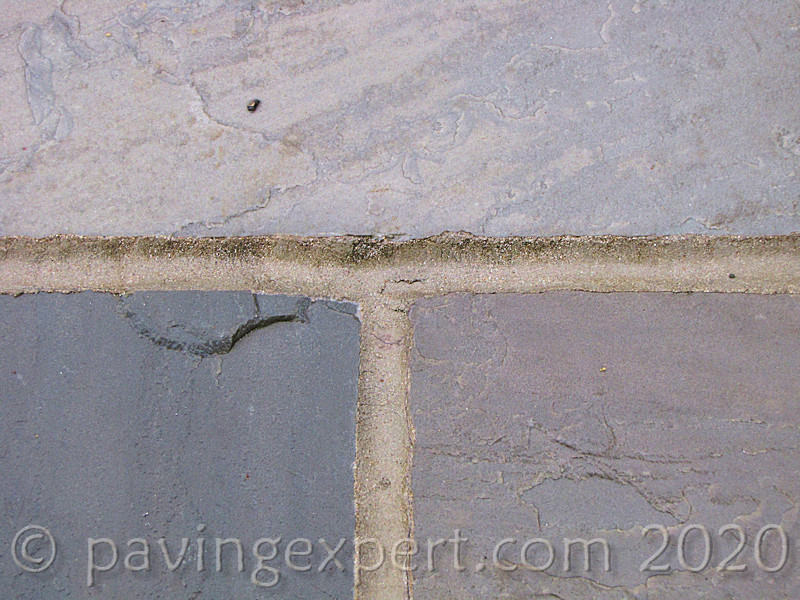
With most types of stone, we find that jointing looks much tidier when a darker-hued mortar is used. Standard mortar can be coloured by the addition of liquid or powder-form chemical dyes available from builders' merchants; alternatively, pre-packed coloured mortars can be obtained from specialist suppliers. Note that most cement dyes require a wet (or at least "damp") mortar and it is not possible to effectively colour a dry mix mortar.
Strength
A high strength mortar is required for effective jointing, therefore a standard Class II 3:1 sand/cement mortar, or a 1:½:4 lime mortar should be used, but it can be 'beefed up' by the addition of a strengthening additive such as Styrene Butadiene Resin (SBR), which not only improves the bonding properties of the mortar, but also improves water-resistance and hardness.
Proprietary cement-based mortars
The repeated failures of poor-quality and sub-standard cement mortar jointing on stone pavements resulted in them being regarded as 'unsuitable' for commercial projects in Britain for several years. Despite stone having a centuries-long pedigree as a paving material, and despite its continued successful use in mainland Europe, it was often discarded in favour of "modern" materials such as concrete and bitmac . Gradually though, there came about a realisation that stone was actually a superb paving material and that the problems that had come to be associated with it were more often a problem with the bedding, the jointing and/or the workmanship. If these issues could be resolved, stone had a future in the British streetscape (the story is slightly different in Ireland because of a different economic cycle).
While there was not much that could be done about workmanship (largely due to the abandonment of traditional streetmasonry apprenticeships and other effective training schemes), the one sure way to overcome the problems caused by cement-shy site-mixed mortars was to rely on pre-batched and guaranteed cementitious products prepared under controlled conditions in off-site factories. By using these reliable products, and by ensuring the installation crews are properly supervised so that no skimping, short-measure or shoddy workmanship is possible, the quality of stone pavement construction has improved beyond recognition and it is now regaining its rightful place as the paving material of choice for the prestigious contracts.
Although some proprietary mortars are used in the traditional 'trowel-pointing' method , the two most popular application techniques are "slurry" and "gun-injection" . Slurry systems use the techniques described elsewhere as "wet grouting" while gun-injection relies on a modified, free-flowing mortar being pumped or squirted through a mastic gun into the empty joints.
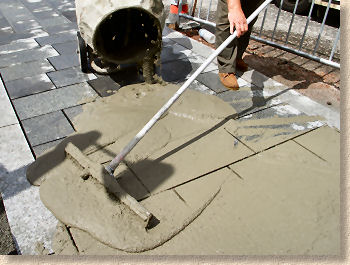
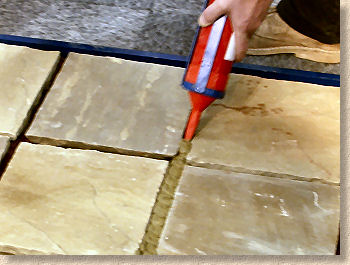
Other pointing and jointing pages...
- Introduction
- Terms & definitions
- Pointing Styles
- Spacers for Paving
- Cement Mortars
- - Hand Pointing
- - Pointing Riven Flagstones Using Coloured Mortar: A Case Study
- - Wet Grouting
- - Dry Grouting
- - Slurry Grouting
- - Steintec Tufftop Slurry Grouting
- - Gun Grouting
- - Poured Grouting
- Resin Mortars
- - Polymerics
- - GftK Polymerics: A Product Study - VDW 840+
- - Romex Polymeric Mortars: A Product Study
- - Jointex Polymeric Mortar: A Product Study
- - Slurries
- - GftK Slurry Mortars: A Product Study - VDW 800 Permeable
- - GftK Slurry Mortars: A Product Study - VDW 850
- Re-jointing paving
- Pitch Jointing
- Loose Fill Jointing
- - Stabilisation
- Alternative Jointing Materials
